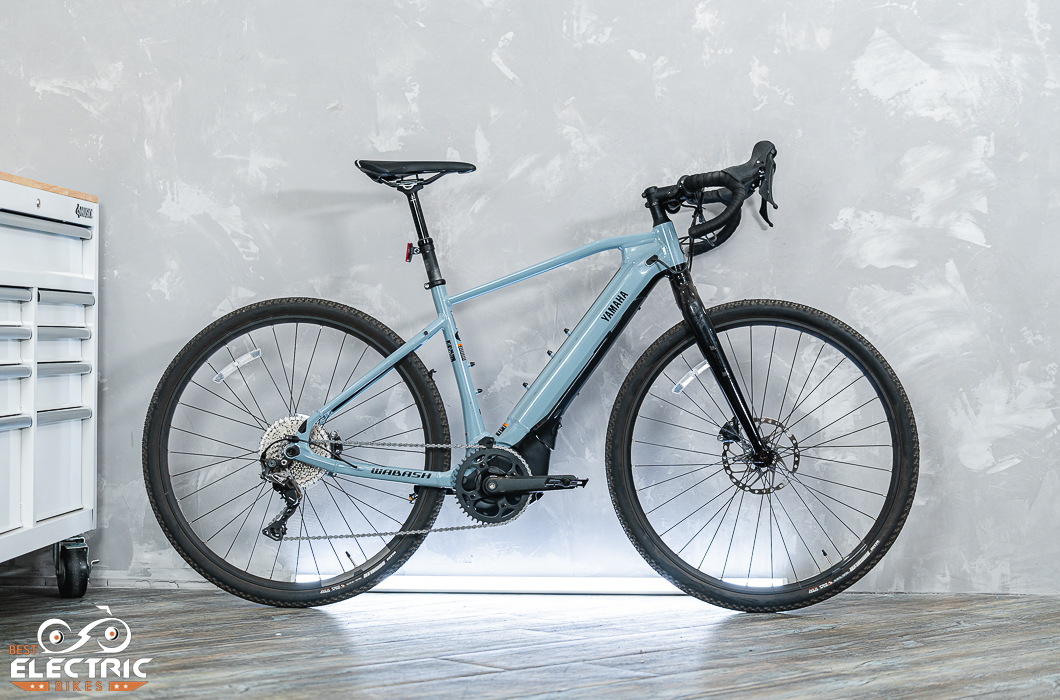
Intro
Yamaha produced its first e-bike in 1993. It was sold only in Japan, so most of us didn’t hear about it at the time. Since then, they’ve refined their designs through many iterations and now supply other e-bike manufacturers—Giant and Haibike are the largest—with their systems.
In our review of the Yamaha Wabash RT we will look at their versatile gravel e-bike, one in a growing category of e-bikes that blends the design elements of a road e-bike with wider tires and a broader range of gears to allow riders to explore a variety of terrain and surfaces while maintaining some of the performance of a road e-bike.
The Yamaha Wabash RT looks and handles much like a road e-bike. At low speeds, it’s nimble and can follow a twisty trail, but at higher speeds its stability rises to give riders a confident feeling at speed. However, where road e-bikes have fairly narrow tires, a gravel e-bike has tires that are wide enough to handle off-road riding. They tend to be better suited to dirt roads than trails, but they ride well on trails that aren’t too technical.
Gravel e-bikes are ideal for riders who want to go exploring and may not stick to paved roads. They split the difference between eMTBs and e-road bikes in terms of abilities, and thanks to a host of mounts on the frame, they are good candidates for someone who wants to do loaded touring.
This is a Class 1 e-bike with a top pedal-assist speed of 20 mph, and it does not include a throttle. Yamaha gave the Wabash RT their 250W mid-drive PW Series SE motor, powered by their 500Wh battery, a wide-range 11-speed SRAM drivetrain, hydraulic disc brakes and mounts to add water bottle cages, a rack, fenders and even a dropper post.
The Yamaha Wabash RT is an exciting and different sort of e-bike. Let’s take a deeper look.
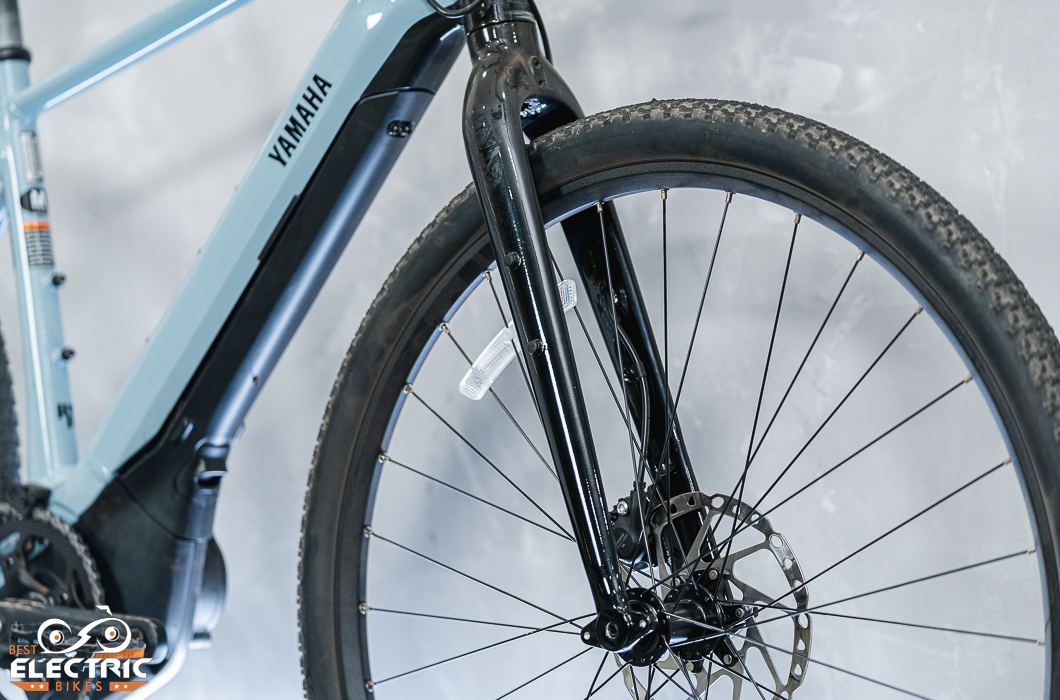
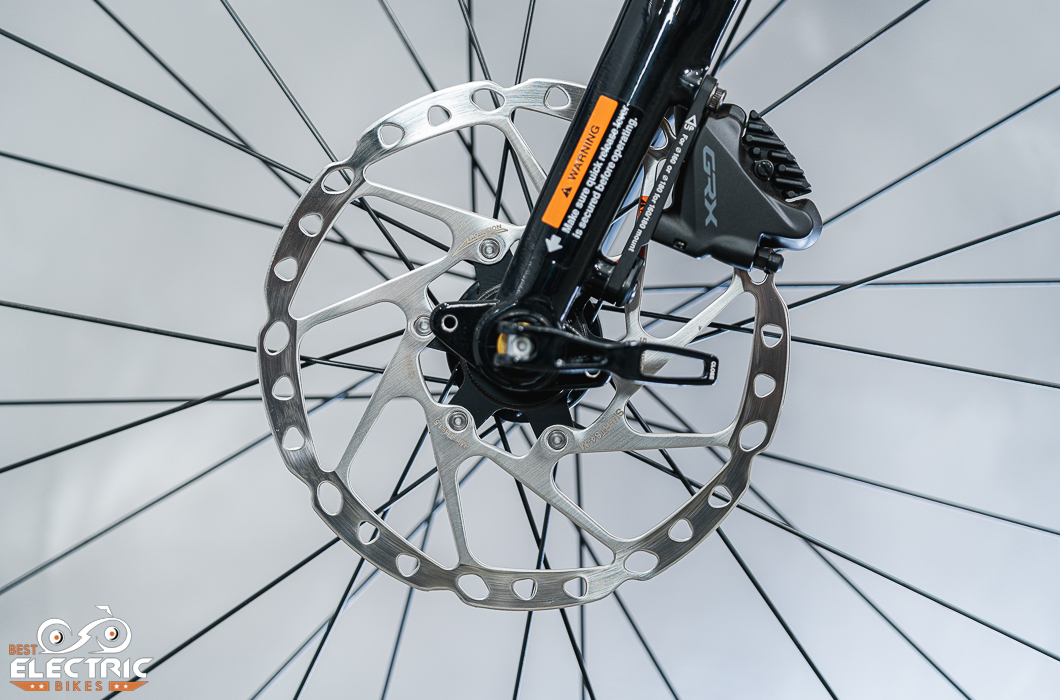
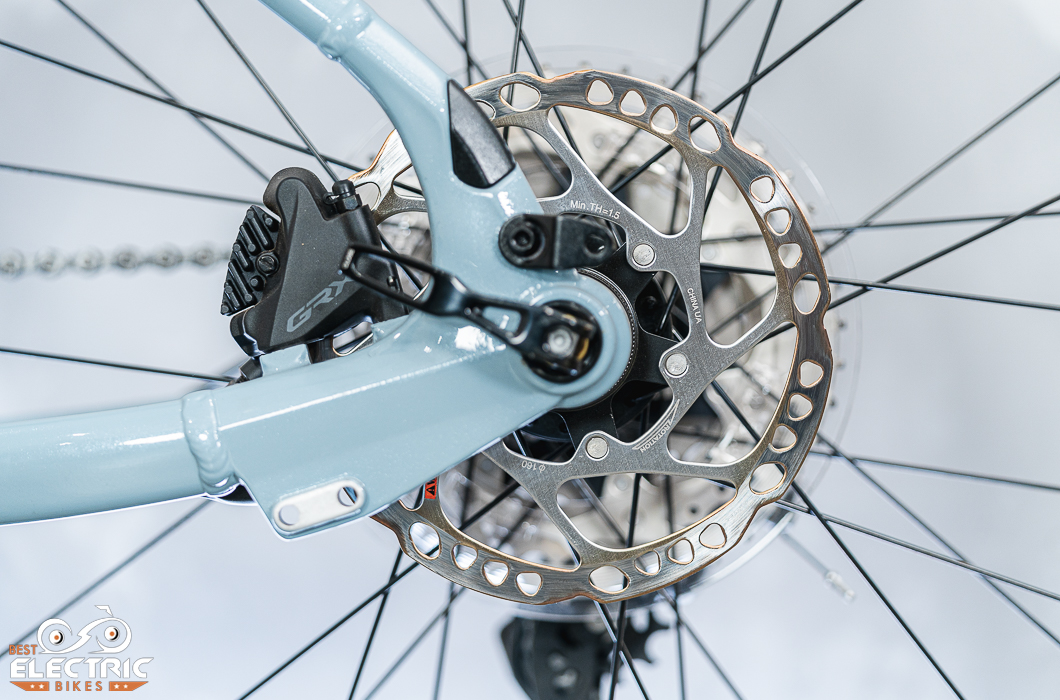
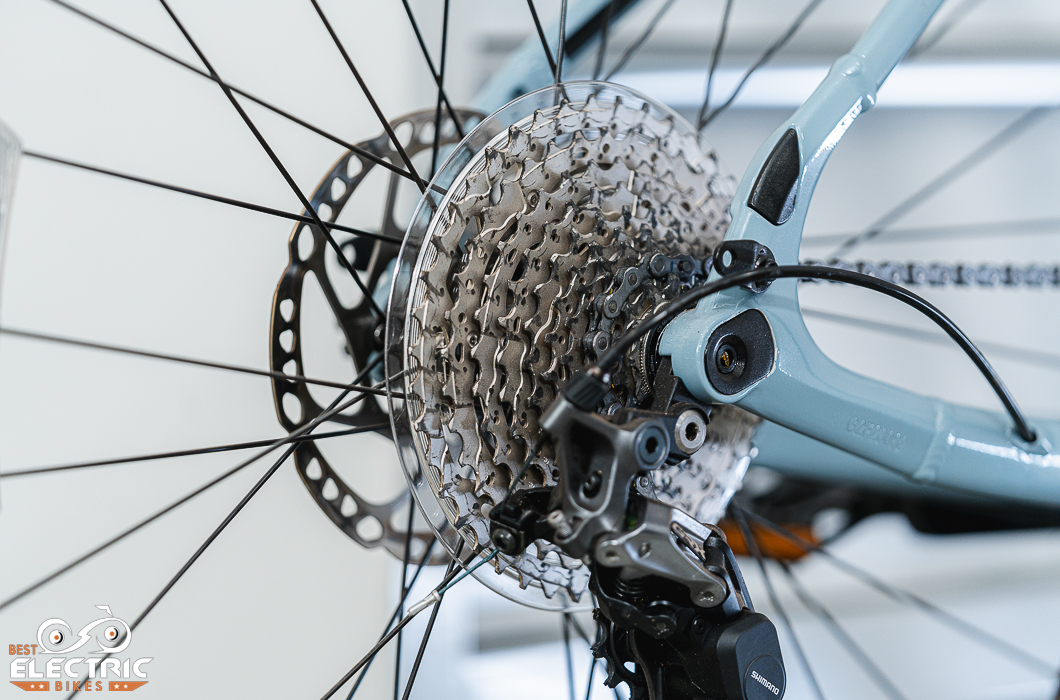
E-Bike Category: Gravel
Who the Yamaha Wabash RT Electric Bike Is for: Riders who want to cover more territory at higher speeds than is possible with an all-terrain e-bike; gravel e-bikes are among the most versatile e-bikes on the market.
Yamaha Wabash Electric Bike Review Ratings:
***All ratings are relative to e-bikes of a similar style and price point***
| Speed/Acceleration | 4.8 5 |
| Hill Climbing | 4.9 5 |
| Battery Range | 4.7 5 |
| Braking | 4.4 5 |
| Construction Quality | 4.5 5 |
| Handling | 4.8 5 |
| Included Accessories | 2 5 |
| Warranty | 4.7 5 |
| Value | 4.8 5 |
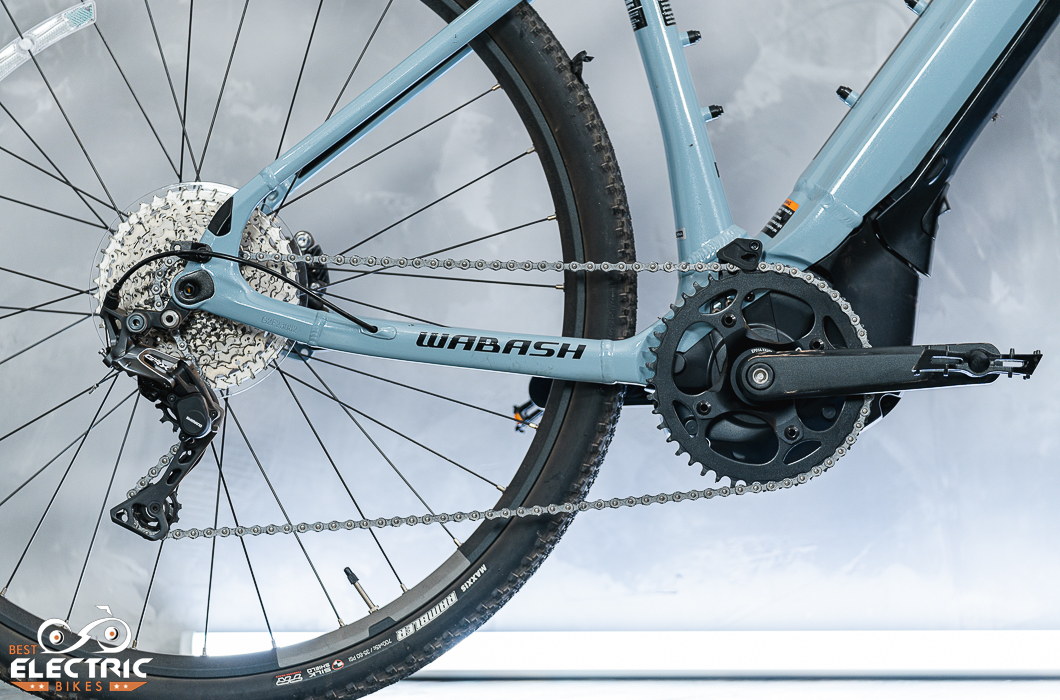
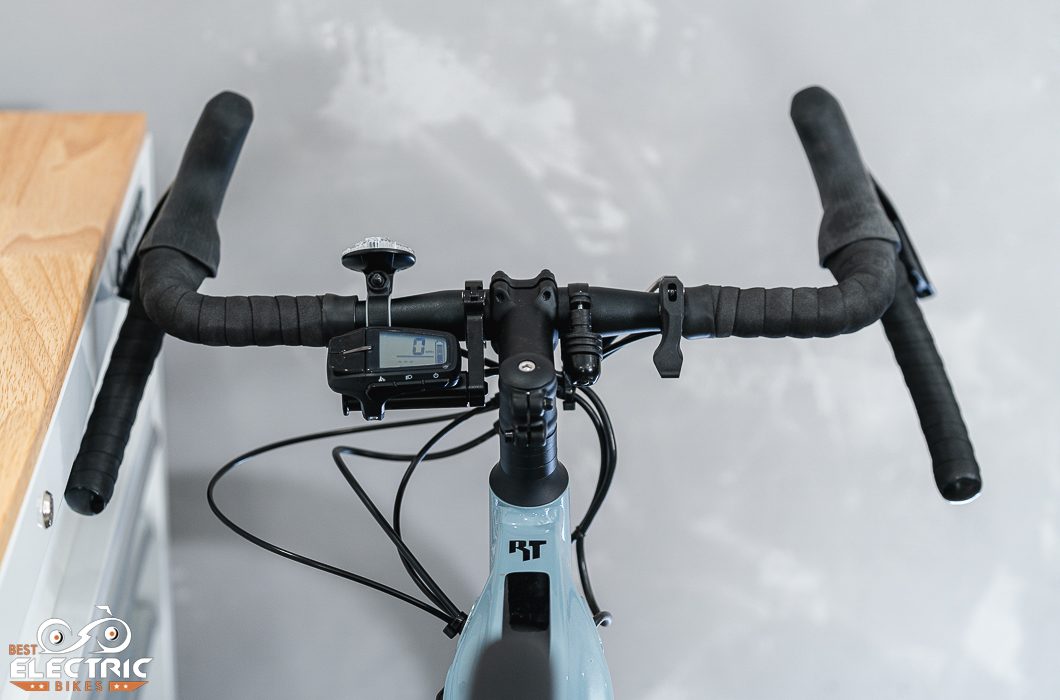
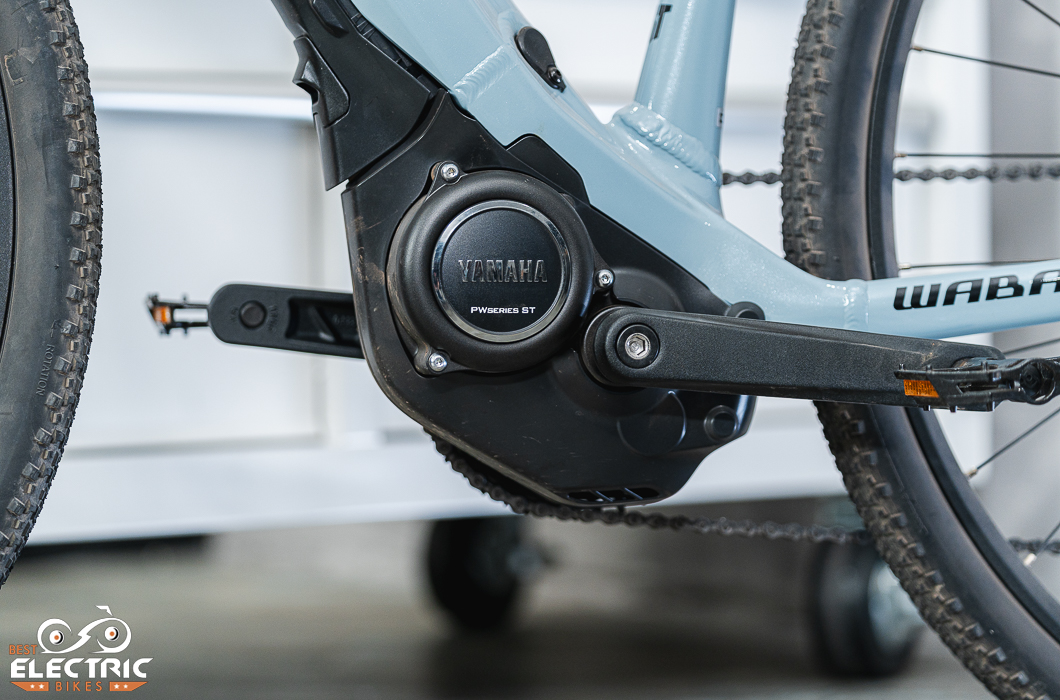
Yamaha Wabash RT E-Bike Specs
- Battery: 36V, 500Wh lithium-ion
- Expected Range:
- Charger: N/A
- Motor: 250W mid-drive motor, 70Nm torque
- UL Certification: UL 2849 (entire electronic system)
- Pedal Assist: 4 PAS levels
- Throttle: N/A
- Display: Black and white LED
- Headlight: Included
- Taillight: N/A
- Frame: Hydroformed aluminum
- Fork: Hydroformed aluminum
- Fenders: N/A
- Kickstand: N/A
- Handlebars: Alloy, 40cm-wide (small) 44cm (medium and large)
- Grips: Padded cork tape
- Drivetrain: SRAM Apex, 48t chainring, 11-42t cassette
- Brakes: SRAM Apex, 160mm rotors
- Pedals: N/A
- Saddle: Yamaha off-road
- Tires: Maxxis Speed Terrane 700Cx33mm, tubeless ready
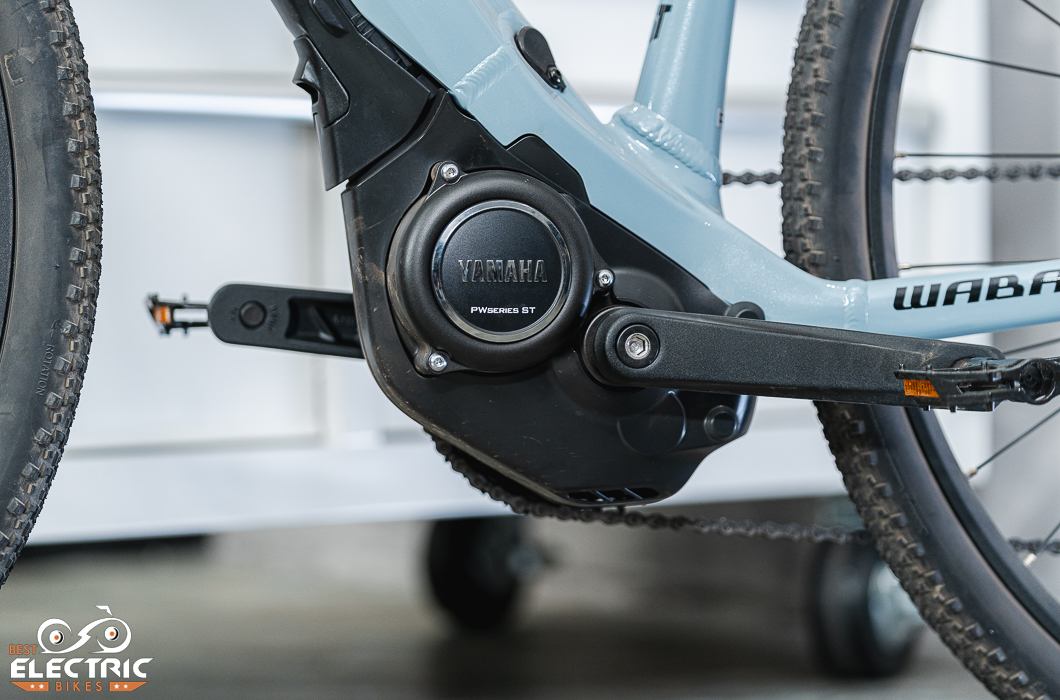
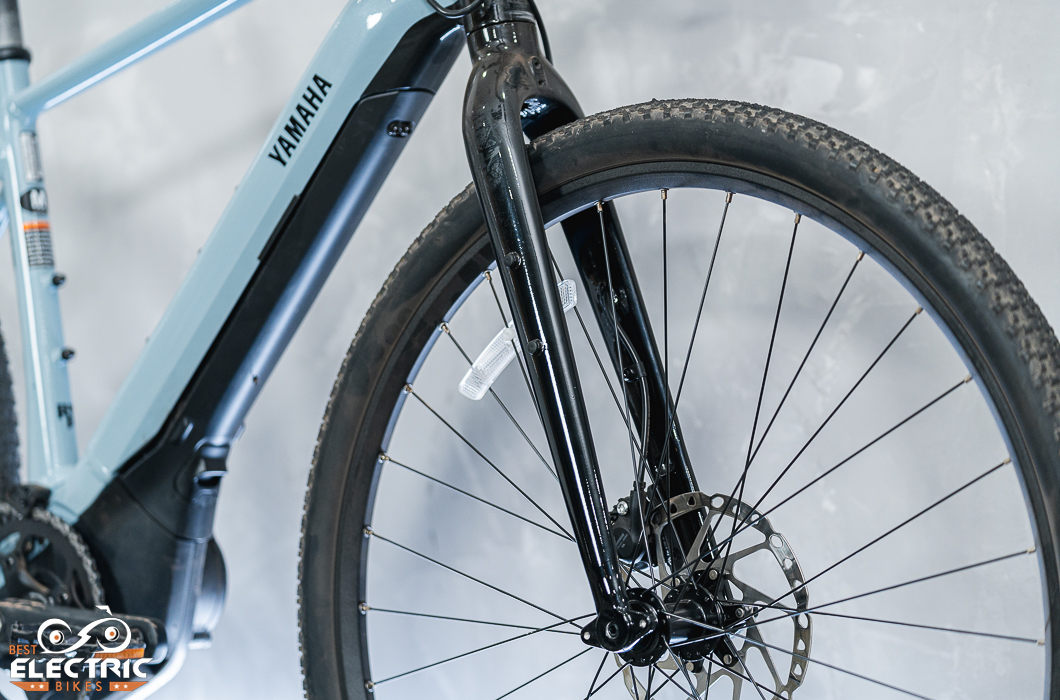
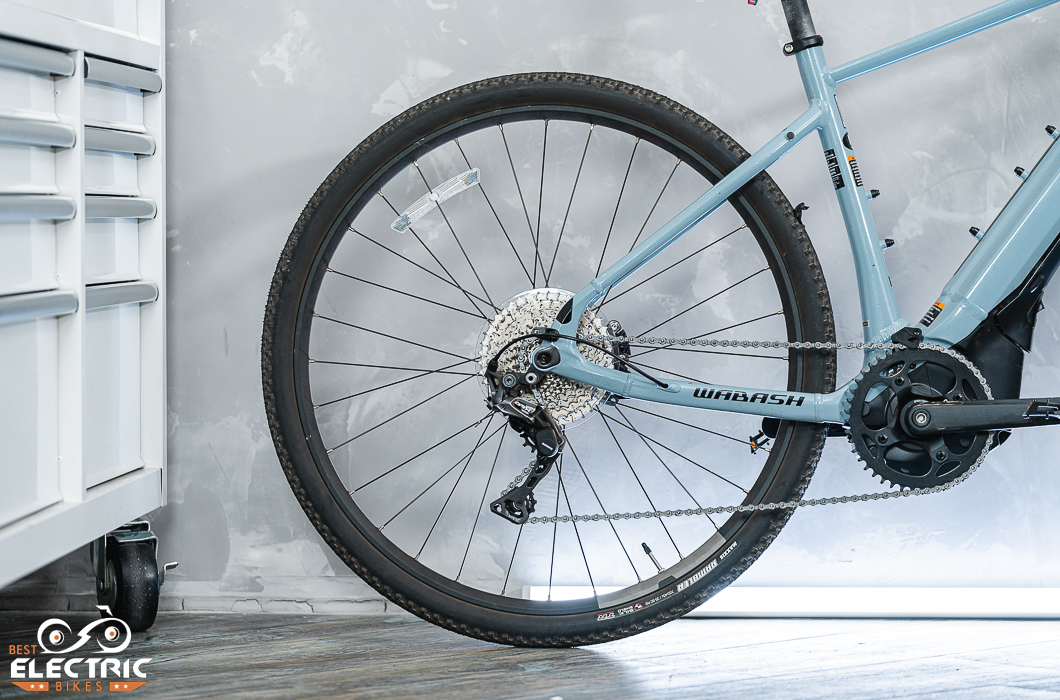
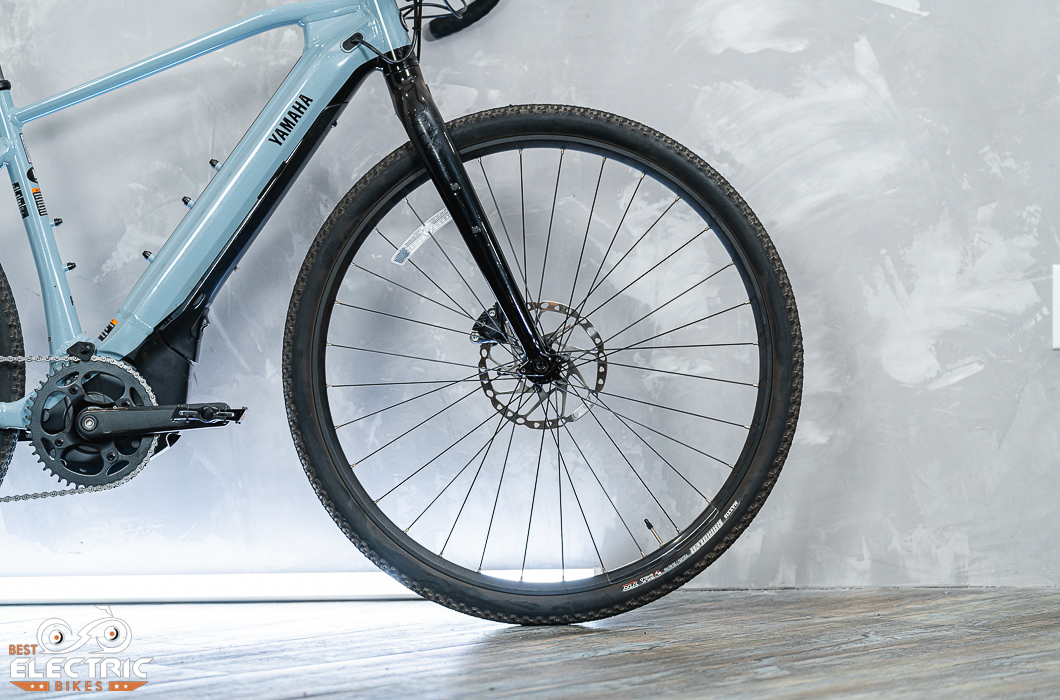
In-Depth Yamaha Wabash RT Review
Yamaha Wabash RT Review: Comfort, Handling, and Ride Qualities
Gravel e-bikes are similar to road e-bikes in that they feature a drop bar and 700C wheels as well as a multi-speed drivetrain. So they look quite similar, but up close, they exhibit a number of differences. The biggest, most notable difference is that the tires are much wider. While most road e-bikes are running tires that are 25-28mm wide (1-1 ⅛ in.), gravel bikes run tires that range from 32-45mm wide (1 ⅜-1 ¾ in.). This gives them a more comfortable ride on rough roads because the tires can be run at lower pressures and their larger footprint combined with less tire pressure means they have much better traction on unpaved surfaces.
Gravel e-bikes offer riders a less aggressive—more upright and comfortable—position than road e-bikes, making them more conducive to long rides. The Yamaha Wabash features a handlebar with flared drops to give the rider more leverage for better control when in the drops. Riding a gravel e-bike definitely puts a rider in a more forward-leaning position than with a flat-bar e-bike, which is something to consider.
Yamaha produces the Wabash RT in three sizes to fit a broad range of rider heights. The site sports a helpful graphic showing the recommended height range for each of the sizes; Yamaha suggests that the small may fit riders as diminutive as 5 feet 2 and the large may fit riders who tower at 6 feet 6.
The Yamaha Wabash RT comes with 33mm-wide tires, which are on the small side for gravel, but for people who live in places that don’t feature lots of chunky rocks in their dirt roads, the Maxxis tires will do a great job, and on paved roads they offer a magic carpet ride.
Gravel e-bikes handle nearly the same as road e-bikes, which is to say they offer terrific stability at speed, while maintaining great maneuverability at low speed.
For riders who have been considering an all-terrain e-bike, a gravel e-bike poses an intriguing alternative. At just 42.3 lbs., the Wabash RT is substantially lighter than most all-terrain models (which typically weigh more than 70 lbs.) and can go just about anywhere an all-terrain e-bike can. It also offers a wider range of gears to help on the hills and at cruising speeds.
Yamaha Wabash RT Review: Motor, Battery, and Drivetrain Performance
With decades of experience making motors for e-bikes, Yamaha was well-positioned to make a lightweight mid-drive motor for road and gravel e-bikes. The Wabash RT is spec’d with Yamaha’s PWSeries SE mid-drive motor. It produces 250W nominally and peaks at 500W while producing 70Nm of torque. This is a very powerful mid-drive motor that when combined with the wide-range drivetrain will allow the Yamaha Wabash RT to cover more terrain than the great majority of e-bikes, arguably all but eMTBs.
Like many e-bikes with mid-drive motors, the Yamaha Wabash RT is a Class 1 e-bike. It will assist riders up to 20 mph and omits a throttle. As a result, anywhere that e-bikes are legal, a Wabash rider can rest assured that this e-bike won’t run afoul of any local ordinances.
Thanks to the mid-drive motor the Wabash RT has a torque sensor that delivers power in proportion to how hard the rider pedals, making for a more responsive ride than with a cadence sensor and best of all, lends the rider a superhero feeling, seamlessly blending their effort with the motor’s output.
The 500Wh battery that powers the motor doubles that 1:1 ratio of motor wattage to battery watt/hours, which is to say, this is one e-bike with serious range. Because so many different factors can affect range—rider size, terrain, surface smoothness, tire pressure, wind and of course PAS level all contribute—they declined to include a suggested range for the Wabash RT. Even in the High PAS level, we anticipate that most riders would get three hours of fun, while dialing back the PAS could see as many as six or seven hours of pedaling.
The SRAM Apex drivetrain is well-suited to this gravel e-bike. It features an 11-speed cassette with an 11-42t cassette; this is a nearly 400 percent gear range, and one only exceeded by what we see with eMTBs; with its 48t chainring, the Wabash can be pedaled at speeds far higher than what the PWSeries SE motor will assist to. Handy thing for downhills.
Yamaha Wabash Review: Braking, Safety & Warranty
Yamaha used SRAM Apex parts throughout the Wabash. In addition to the Apex drivetrain, Yamaha chose SRAM’s Apex brakes for the Wabash. These are hydraulic disc brakes paired with 160mm rotors. Yamaha chose a smaller rotor for the Wabash RT Because the Maxxis tires don’t have the width of the tires we see on all-terrain e-bikes and going with a slightly smaller rotor preserves great modulation while reducing the chance of locking up the rear wheel when braking hard.
When we have a concern about an e-bike’s safety, we talk to the manufacturer about our concerns. It’s not a conversation we need to have with any regularity, but every now and then we do identify something. More common is that we take note of something that we want to make sure consumers are alert to.
With the way UL certification has become a growing concern in the e-bike market, we are happy to report that the Wabash is certified to UL’s 2849 standard, which governs the entire electronics system, including motor and battery.
With the Yamaha Wabash RT the only aspect of the e-bike’s performance that we would caution potential buyers to consider is that within the range of tires aimed at gravel e-bikes, these are on the narrow side. They won’t offer as much traction as wider tires, nor will they be as comfortable as a 40mm-wide tire. This is easy enough to improve upon with a different set of tires. What will definitely help both traction and comfort with the existing tires would be to take the wheels to a bike shop to have them set up to run tubeless.
Yamaha’s warranty is a distinct cut above. Their electronics, including both the motor and the battery, and the e-bike’s frame are covered for three years. Everything else is covered for one year. The warranty is transferable, provided the e-bike is inspected by an approved Yamaha dealer within ten days of the transfer.
Yamaha Wabash RT Review: Recommendation/Final Verdict
So who is a candidate for the Yamaha Wabash? Who was Yamaha thinking of? This is an e-bike that is most likely to appeal to someone who has experience riding road bikes and maybe gravel bikes as well. One of the issues with riding on dirt roads is that the going is slower due to the softer surface. For the rider accustomed to cruising on the roads at 15 mph, riding a gravel bike on a dirt road they may only go 10 mph. Going slower means seeing less. Moving to a gravel e-bike is a way to keep the riding speed up and still go for long rides.
The Yamaha Wabash RT is also ideal for older riders who simply can’t pedal at the pace they used to. Add to that a loss of strength for going uphill and suddenly an e-bike makes a whole lot of sense.
Some riders may question the wisdom of making a gravel e-bike Class 1, but it’s a very smart choice. First, as we observed, the Wabash will be legal anywhere e-bikes are legal, no restrictions. Second, many of the riders for whom this e-bike will appeal are dedicated cyclists and are unlikely to find the throttle a selling point. Third, when riding on the road, 20 mph is quick, but not that quick; on gravel, 20 mph is very quick, so riders are unlikely to find themselves disappointed that the motor cut off after reaching the 20 mph threshold.
For anyone who has ridden gravel bikes, the Yamaha Wabash RT looks like a very normal gravel bike, but with the added benefit of some assistance, especially when going uphill. The Yamaha PWSeries SE motor enjoys a great reputation and helps to keep the overall weight of the Wabash RT to an impressive 42.3 lbs. With such a low weight, anyone concerned about their ability to manage an e-bike weighing 70 lbs. or more will find the Yamaha Wabash RT a delightful alternative.
For the rider who has enjoyed road bikes in the past and wants to explore more than a road e-bike would permit, a gravel e-bike is an ideal alternative. They ride well on pavement and can go most of the places that an eMTB would go. The torque sensor and mid-drive motor means that riding this e-bike will be a workout, but the reward will be superhero acceleration and climbing and the ability to explore all the backroads.
Thank you for reading through our review of the Yamaha WabashRT . Still have further questions? Wondering how it compares to a similar e-bike we’ve reviewed? Let us know in the comments below!


Leave a Reply